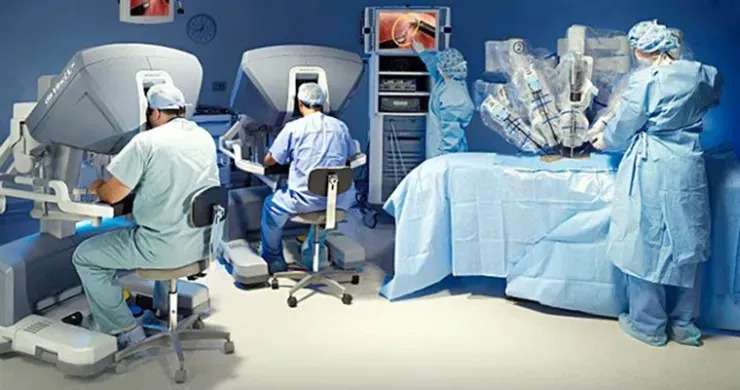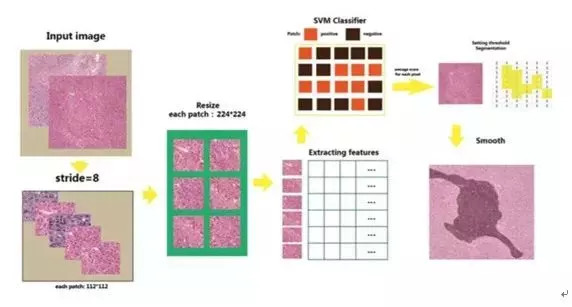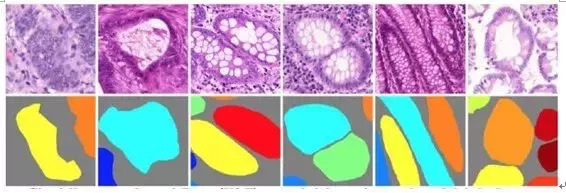The benefits of artificial intelligence are obvious. For example, in the field of medical and health care, human experts need to spend years of continuous research and error correction before they can come up with a set of methods for diagnosing diseases based on various factors, but for artificial intelligence, it may only take a few minutes. thing. Google has made many achievements in the field of medical AI, such as using AI to diagnose cardiovascular diseases, fundus diseases, and acute kidney injury. Now the veteran technology giant-Microsoft has also stepped up. Recently, Microsoft and Apollo Hospital issued a joint statement stating that the two parties will form a strategic alliance to jointly design new machine learning algorithms to predict the risk of heart disease and help doctors quickly find relevant treatments. "Our cooperation with Apollo Hospital combines our expertise in artificial intelligence and machine learning with Apollo Hospital's expertise and experience in cardiology," said Peter Lee, vice president of Microsoft's Artificial Intelligence Research Center. He also pointed out that the combination of artificial intelligence and medical and health systems is to better empower medical workers, thereby promoting the popularization of artificial intelligence. This process is solution-oriented, reducing the burden of diseases on humans through more intuitive, fast and effective diagnostic methods. Microsoft pointed out in a blog that the two parties are currently developing an artificial intelligence API for determining heart health. However, there is no statement in the blog that this API is unique to Apollo Hospital or will be open to other medical practitioners in the country. In India, cardiovascular disease is one of the main causes of patient death, and the death rate from heart disease is 0.235% higher than the global average (as of 2016). The situation is even more severe for patients with early-onset diseases. Apollo Hospital has a large number of clinical history data of heart disease patients, and they plan to use this data and advanced technologies such as artificial intelligence to predict and prevent the occurrence of heart disease. Sangita Reddy, the joint general manager of Apollo Hospital, said that they will gradually establish a "global alliance" so that their research results will benefit patients in other countries. In addition to cooperating with Apollo Hospital, Microsoft recently announced the launch of the Microsoft Genomics service. The Microsoft Genomics service uses and processes genetic data to help medical researchers invent drugs that more accurately treat cancer and other diseases. For example, by analyzing the patient's health and tumor cell tissue and other patients' medical data (including treatment methods and results), doctors can choose the most effective treatment plan. The St. Jude Children’s Research Hospital, Microsoft, and DNAnexus (a genetic data management platform operating on Azure) have jointly developed a set of procedures for genome comparison and genetic variant identification based on shared genetic data and Microsoft Genomics services. Based on this process, the collaborators have processed more than 500TB of genetic data and stored it in Azure for analysis. These data analysis results provide a good foundation for the data sharing platform that the research hospital, DNAnexus and Microsoft are building together. It is understood that Microsoft Genomics service is part of Microsoft Healthcare NExT, and Healthcare Next is Microsoft’s initiative to accelerate the innovation of the healthcare industry through artificial intelligence and cloud computing. With a large amount of accurate medical data, Microsoft hopes to use AI tools deployed on the cloud to help researchers find cures for diseases such as cancer more quickly. And a general process for processing genetic data can effectively reduce artifacts and noise that may affect data, and contribute to AI-driven precision medicine. Currently, Microsoft Genomics has provided services to users in the United States, Western Europe and Southeast Asia. The layout has a long history Identification and judgment of pathological sections Microsoft has a long history in the medical and health field. As early as 2014, the team of Microsoft Research Asia began to study the identification and judgment of pathological slices of brain tumors, and assisted analysis and judgment through cell morphology, size, and structure. The stage of cancer the patient is in. In the past two years, based on the "neural network + deep learning" model, Microsoft Research Asia has made two breakthroughs in this field: First of all, the image processing of large-size pathological slices is realized. Usually the size of a picture is 224*224 pixels, but the size of a pathological slice of a brain tumor has reached 200,000*200,000, or even 400,000*400,000 pixels. For the recognition system of large-scale pathological slice images, Microsoft Research Asia did not use the digital medical image database commonly used in the industry. Instead, it used as many pictures as possible on the basis of ImageNet, the most mature image database in the computer field, and built it by itself. Neural networks and deep learning algorithms are continuously trained in a large amount, and finally realize the image processing of large-scale pathological slices. The process of processing large-size pathological slice images through neural networks and deep learning algorithms Secondly, after solving the image recognition at the cell level, the diseased glands are recognized again. The so-called gland can be simply understood as a collection of multiple cells, which is closer to the concept of "organ". Compared with cell lesions, the complexity and possible combinations of glandular lesions have increased exponentially, but the accurate identification of glandular states can greatly improve the accuracy of cancer analysis, and the significance is more profound. The identification of diseased glands is mainly based on three indicators that can measure the spread and prognosis of cancer cells from a medical perspective: the differentiation ability of the cells, the condition of the glands, and the level of mitosis. Based on these three perspectives, Microsoft Research Asia hopes to help doctors estimate and judge the possibility of patients' surgery, recovery level and even recurrence through multi-channel data collection and analysis in the future. The image of the glands is processed by the computer and abstracted into different structures, so that the computer can further identify and judge In the past, doctors used "naked eyes" and experience to observe pathological slice images and judge the condition. Today, two core technologies in artificial intelligence: neural networks and deep learning allow computer systems to automatically learn the difference between malignant tumor cells and normal cells. As well as the analysis and judgment standards of cancer conditions, at the same time, after scanning the pathological slices, the judgment results can be given for the doctor's reference. The powerful computing power of the computer makes up for the misjudgment of some doctors due to inexperience, or the inadequate thinking about rare diseases and incurable diseases. Moreover, the computer can also discover small details that are not easily detectable by the human eye, and sum up some laws that are beyond the expectation of doctors, so as to continuously improve the knowledge system of doctors and computer systems. Therefore, it is artificial intelligence technology that allows precision medicine to continue to move forward. Different types of malignant tumor slices are classified after algorithm processing At present, the accuracy of the two-dimensional medical image recognition results of Microsoft Research Asia has reached the international leading level. In addition to brain tumors, the results of the study can also be extended to the identification and judgment of two-dimensional medical images of other diseases, such as colorectal cancer under study. In addition, Microsoft Research Asia is still studying CT three-dimensional images of patients with liver tumors. Although the recognition technology of three-dimensional images and two-dimensional images is fundamentally different, based on the in-depth accumulation of Microsoft Research Asia in the field of artificial intelligence over the years, believe me they A breakthrough in 3D CT image recognition is just around the corner. Super electronic medical record, a doctor’s "dictionary" In addition to medical image recognition, Microsoft Research Asia has also done a lot of research on medical word processing. The medical records written by doctors all over the world are the most difficult to understand calligraphy. Due to the limited time, doctors have to fly and dance when writing medical records. After the digitalization of medical records, although the problem of writing has been solved, the various descriptive languages ​​recorded in the medical records—some concise, some verbose, and some even incomplete—for doctors follow-up review, review or study of the condition It is very inconvenient for reference. Therefore, the Microsoft Research Asia team uses voice and natural language understanding technology to allow doctors to dictate medical records, and then the computer converts the voice into text and then performs structured processing to form a tree diagram that includes all keywords, clear and concise Summarize all useful information so that the patient or other doctors can understand all the pathological history at a glance, such as what medical history, what drugs have been used, which diseases may be excluded, which diseases are to be investigated, and so on. Based on such electronic medical records, the replacement of doctors will no longer affect different doctors’ understanding of the patient’s complete condition; young doctors can also grow rapidly by learning various medical records; structured electronic medical records can even automatically summarize details and details ignored by doctors. Inferred, get new clues about the condition of the disease; of course, it will greatly reduce the workload of doctors in writing medical records, and there is no need to say more. â—High-efficiency, energy-saving design, full display of green concept from inside to outside High efficiency rectifier Changzhou Changyuan Electronic Co., Ltd. , https://www.cydiode.com



The system adopts a high-efficiency rectifier, the peak efficiency of the rectifier is greater than 96.2%, and the power consumption of the rectifier sleep is as low as 4W or less.
â—The rectifier module is small in size and high in power density, improving the utilization of cabinet space
â—Fully digital design, more stable performance
The rectifier adopts DSP+MCU dual digital circuit control mode, the system adopts CAN+RS485 dual bus control, the system power supply reliability is higher, and the transmission rate is faster.